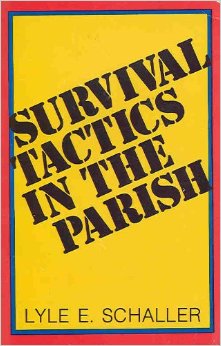
Survival Tactics in the Parish by Lyle Schaller
Schaller uses a narrative style to explain the challenges of leading a church. This story follows a pastor who goes on a retreat to meet other pastors of other denominations. As the retreat leader guides the group, each person describes the challenges of leading a church.
Weaved into this narrative are explanations about why the church acts the way the church does. The reader begins to understand that the nature of leadership is not just defined by the leader, but also the context. The book addresses all kinds of challenges that a pastor will face when leading a congregation.
I found the style of this book very easy to read. In reading this book, the first insight that helped me was the idea of measuring the pastorate. Seeing the pastorate ministry in chapters of books, and not years was very revealing. The church sees the ministry of a pastor in chapters of books, and not in a total number of years (page 26-27).
The chapter about the predecessor was also helpful. Knowing who came before you will help you evaluate where your congregation is in the present. The notion of task and social leaders (page 42-45) was helpful. The test of discovering if I was a social or task leader (“ask your wife”) was humorous but true.
This book assumed a hermeneutic of Christian leadership. However, very few pages in the book used the Scriptures to explain the proper behavior of a leader. (Page 152 notes the behavior of youth pastor and shares a set of Biblical texts.)
The book does approach the pastorate with an “ecumenical” flavor. However, the author wishes to address the mechanics of the pastorate and the challenges related to the job. To put it another way, this book addressed the political side of pastoring, and less the Biblical role of pastoring.
The point of departure I had with this book was the fact that it did seem dated. This book talked about ministry in the 1950-1970s. The context of ministry today is in some ways much different. This text would probably be relevant in rural churches. However, many larger churches deal with other issues related to families in the church.
The book addresses barriers to growth (pages 137-143). This idea complimented just about any of the church growth books I have read.
In the style in which the author wrote, he presents many ideas that a church planter may not need to consider. But again, the nature of this book was not designed to share principles of church planting or evangelism. This book was designed to highlight the challenges that a pastor will have to face in order to understand the people he leads. So I find that this book would compliment evangelism texts. When a pastor understands his people better, he will be able to use better evangelism tools and strategies to help grow the church and God’s kingdom.












